Atelier AJAM
MOINE Loïc, BASTIDE Joël, GADOIS Florent, MAGNE Lucien, PICHON CharlesParis, Montpellier // France
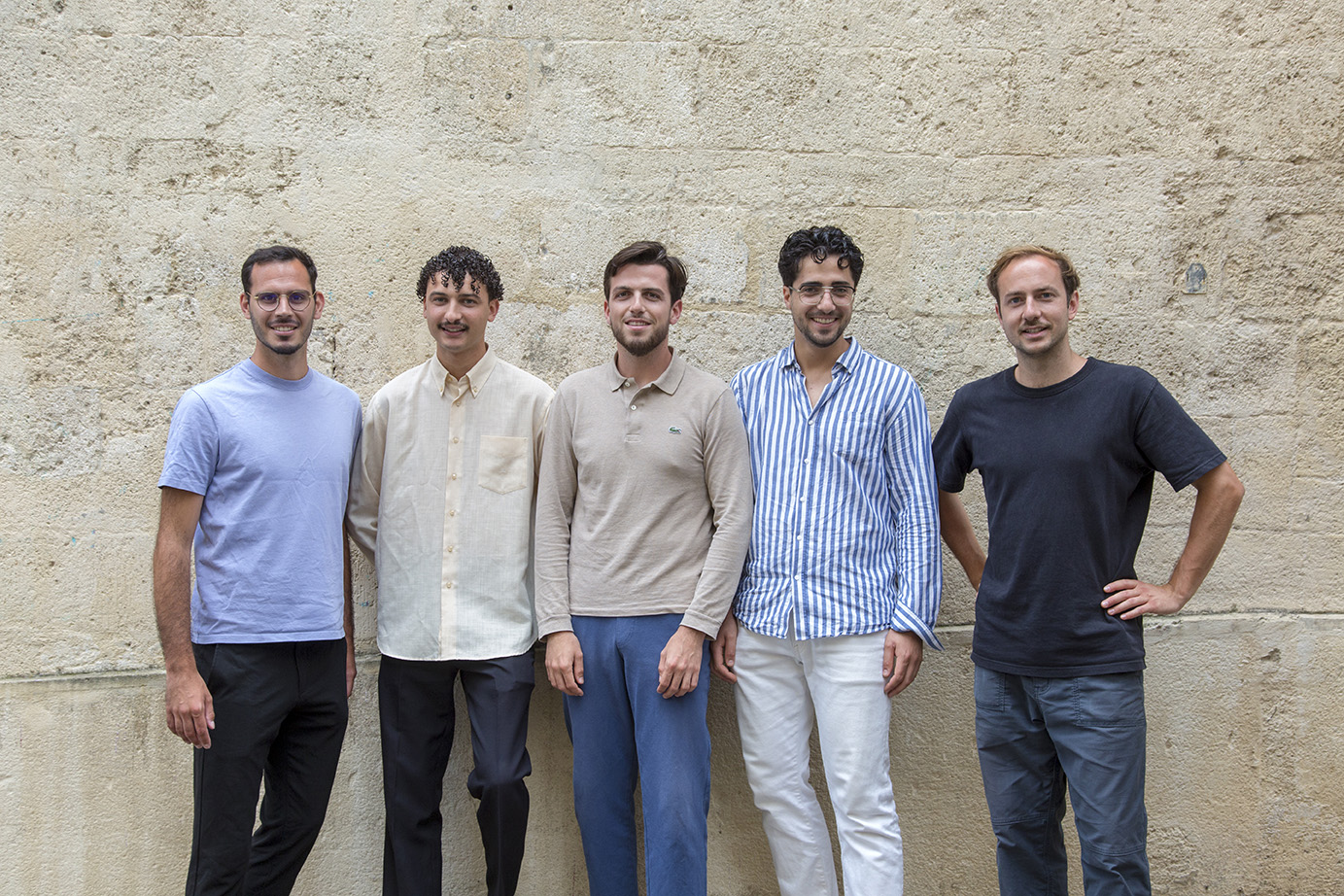
Vidéo de l’équipe :
Fondé en 2021, l’atelier d’architecture AJAM est composé de cinq architectes D.E. : Joël Bastide, Florent Gadois, Lucien Magne, Loïc Moine et Charles Pichon. Implanté à Montpellier et Paris, les projets menés sont de natures variées, inscrits dans divers territoires, avec une approche constamment attentive au lieu. Exerçant dans un monde en perpétuel mouvement, l’approche menée s’éloigne des effets de mode, ou encore des évolutions technologiques. L’atelier privilégie l’exploration des modes constructifs et des ressources matérielles, aspirant à développer une architecture lisible, inscrite dans une réalité économique.
Founded in 2021, the architecture studio AJAM is 5 architects : Joël Bastide, Florent Gadois, Lucien Magne, Loïc Moine and Charles Pichon. Located in Montpellier and Paris, the projects carried out are varied, in various territories, always with an approach in close relationship with its environment. Working in a world in perpetual movement, the approach is thoroughly thought and avoids all vogue and technological trends. The studio favors the exploration of constructive modes and material resources, aspiring to develop a readable architecture inscribed in an economical reality.
Matière Morte



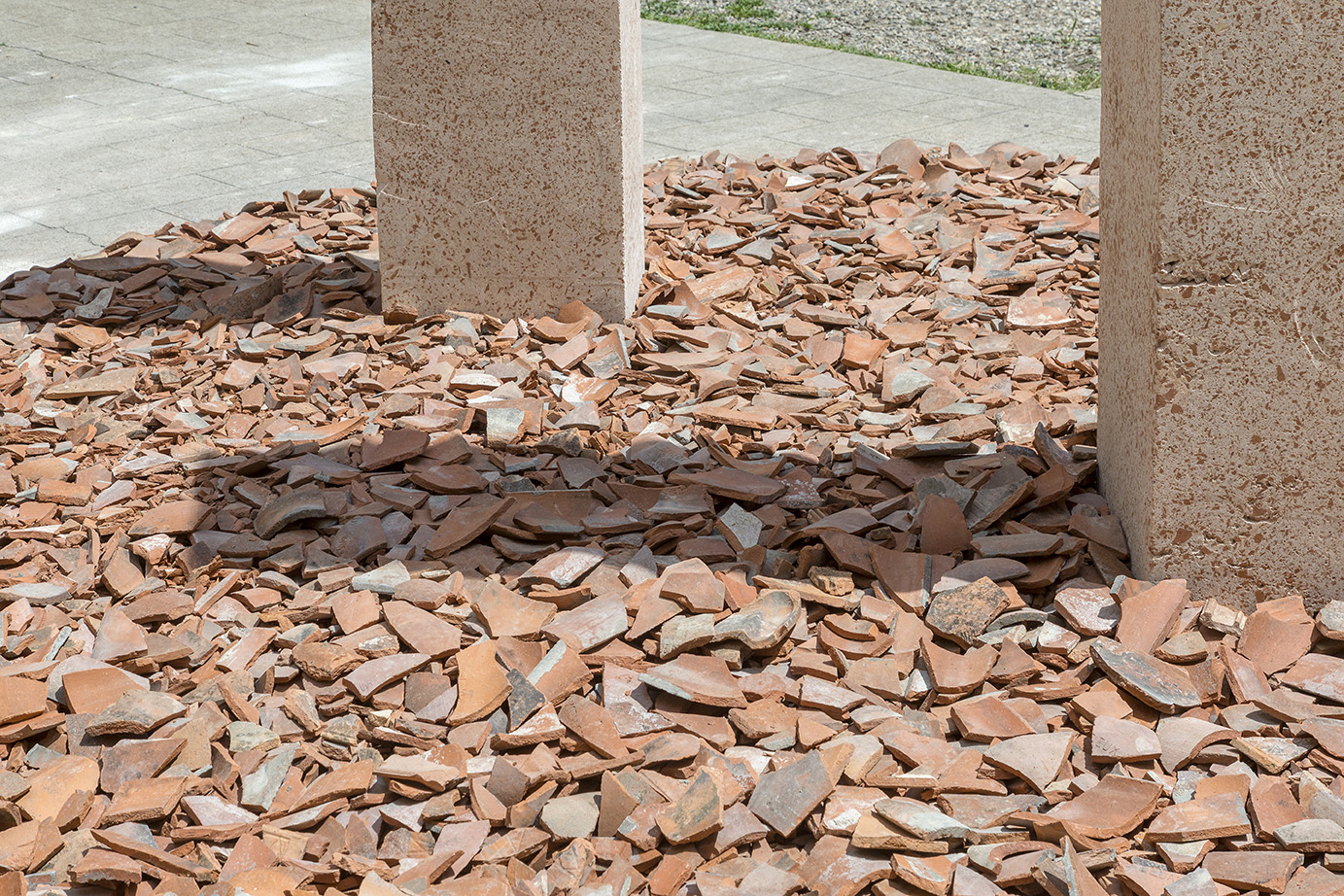

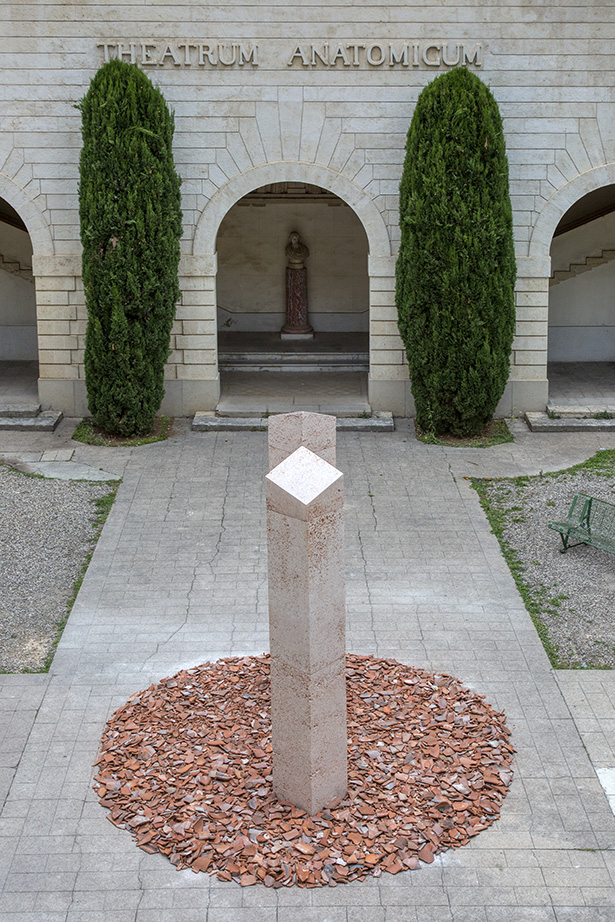
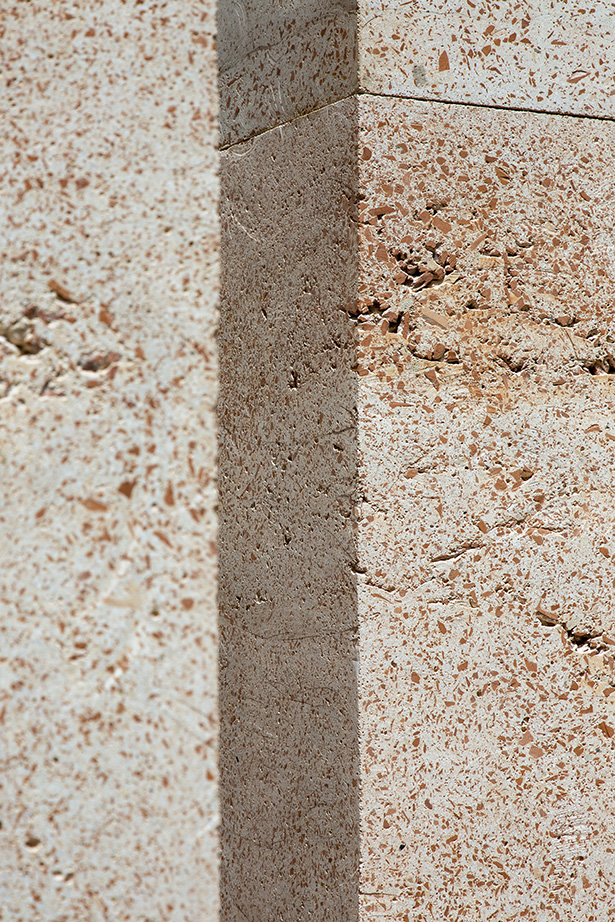
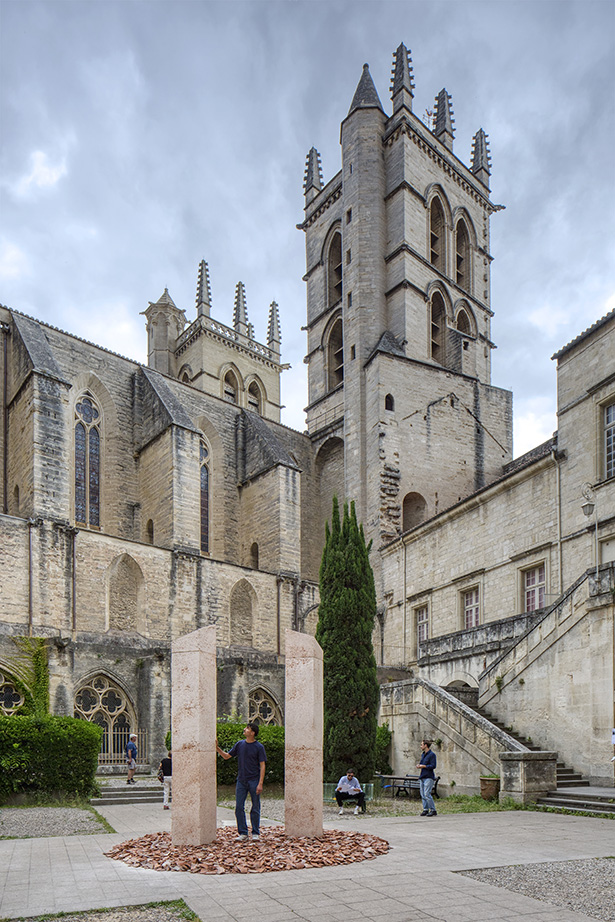

[Sacralité]. De la thématique au processus de conception, nous abordons à travers notre position d’architecte, l’action de sacraliser. Quelle est notre capacité à rendre sacral, à revêtir d’un caractère sacré ?
Signifier la verticalité. L’atmosphère d’un paysage intérieur qui, contenu sur lui-même, s’ouvre à l’immensité du ciel. En réaction à cela, nous explorons l’élancement d’éléments de matière sublimant cette relation fondamentale entre la terre et le ciel.
Cristalliser une matière morte. La matière peut être retirée d’une fonction à laquelle celle-ci répond, devenant une matière morte, sans que celle-ci le soit réellement. En ce sens, nous croyons en la capacité à se saisir de cette matière morte comme ressource à cristalliser.
Exécuter les rites. Le processus constructif est la succession d’une pluralité d’actes. Dans le respect de l’ordre de chacun de ces gestes, l’élévation de l’œuvre bâtie en est la finalité.
Sacraliser la matière. L’œuvre que nous projetons est composée de monolithes. La massivité et l’échelle de ces éléments dépassent celles de l’être conscient. Les monolithes s’élancent et se taisent face à l’immensité du ciel.
[Sacrality]. From the theme to the design process, we approach, through our role of architects, the act of sacralize. How able are we to make something become sacred, to endow it with a sacred nature?
Showing the verticality. The atmosphere of an indoor landscape that, contained on itself, opens onto the immensity of the sky. In response to this, we explore the towering of elements of material that exalt this fundamental relationship between the Earth and the Sky.
Crystallizing a dead material. Material can be removed from an intended function, becoming a dead material, without being actually dead. Accordingly, we believe in the fact to use this dead material as a resource to crystallize.
Performing the rites. The construction process is the succession of a plurality of acts. In accordance with the order of these gestures, the elevation of the built work is its ultimate goal.
Sacralizing the material. The work we project is composed of monoliths. The massive scale of these elements exceeds that of conscious beings. The monoliths soar up and stay silent in the face of the immensity of the sky.
Vidéo du projet :
